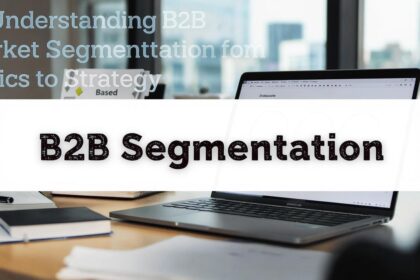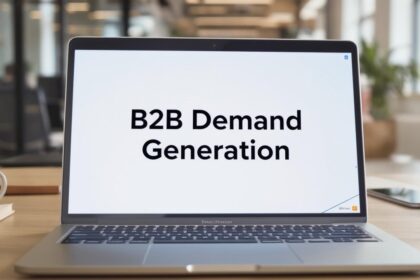Success with Shopping isn’t accidental. It’s the result of disciplined structure, clean data, rigorous testing, and relentless optimisation. Whether you’re scaling a mature programme or building from a solid foundation, these advanced tips will help you push performance further and extract more value from your media spend. Along the way, we’ll emphasise the most important levers for better visibility, stronger click intent, and higher conversion efficiency in Google shopping ads management.
1) Structure your campaigns around intent, not just products
Most feeds mirror a merchant’s catalogue. That’s useful for operations, but it’s mediocre for paid performance. Instead, shape your campaigns to match shopper intent and margin realities.
- Split by funnel stage
- High-intent: Bestsellers, exact match product queries, strong margins.
- Mid-intent: Generic category queries and new arrivals.
- Prospecting: Broad discovery and experimental lines.
- Separate branded vs generic
- Ringfence brand-protective campaigns to preserve ROAS and ensure clean reporting.
- Use stricter budgets and negative keywords in generic Shopping to keep CPCs viable.
- Consider price and profitability tiers
- Group products by margin bands and lifecycle stage (full price, promo, clearance).
- Apply bid strategies and budgets that reflect commercial value, not just clicks.
This shift allows you to allocate spend to where the incremental return is highest, not merely where you have the most SKUs.
2) Master feed health: your most powerful growth lever
The product feed is your creative and your targeting. Treat it like a living asset.
- Titles that match search behaviour
- Include brand, core attribute, model, differentiator, and size/colour where relevant.
- Front-load the most searched attributes within the first 70 characters.
- Descriptions that add context
- Clarify use cases and benefits, not just specs. Think “why it’s great”, not just “what it is.”
- GTINs and MPNs
- Complete identifiers improve matching and eligibility, which boosts impressions and lowers CPCs.
- Image excellence
- Use high-res, clean backgrounds, and consistent angles. Test lifestyle imagery vs studio shots where allowed.
- Pricing and availability freshness
- Sync often. Price mismatches or stock issues crush trust and Quality Score equivalents.
- Attribute enrichment
- Populate colour, size, material, gender, age group, and custom labels consistently to unlock granular control.
A robust feed keeps your products eligible, competitive, and correctly matched to high-intent queries—core to effective Google shopping ads management.
3) Use custom labels with a commercial strategy
Custom labels are your steering wheel for automation. Design them with business outcomes in mind.
- Margin band: high, medium, low
- Lifecycle: new, evergreen, seasonal, end-of-line
- Price band: low AOV, mid AOV, premium
- Performance cohort: hero, challenger, test
- Inventory status: high stock, constrained, last units
Then build campaign and asset group structures around these labels. Pair valuable segments with higher bids or more aggressive tROAS targets, and throttle low-value segments to protect efficiency.
4) Improve search term quality with negatives and exclusions
Even in a world of automation, you can still shape traffic quality.
- Use account-level negative keyword lists for irrelevant themes
- Exclude poor-match product types from broad campaigns
- Remove low-intent modifiers like “free” or “DIY” if they consistently waste spend
- For non-shopping brand protection, run a separate brand Search campaign to soak up navigation queries efficiently, keeping Shopping more commercially focused
Cleaner queries mean better click intent and stronger conversion rates.
5) Smart bidding with clear signals and guardrails
Automation needs good inputs and sensible constraints.
- Choose a strategy by funnel stage
- High-intent or high-margin groups: tROAS often works best.
- Prospecting or low-data segments: Maximise conversion value with a cautious target or Maximise clicks early for signal gathering.
- Feed it reliable conversion data
- Implement Enhanced Conversions and server-side where possible.
- Deduplicate conversions across platforms.
- Give it time and breadth
- Avoid frequent resets to budgets or targets.
- Let seasonality adjustments or data exclusions handle unusual periods.
- Segment to protect learning
- Keep volatile test segments in their own campaigns so they don’t contaminate proven performers.
6) Competitive edge: pricing, promotions, and merchant ratings
Your CPC is only half the battle. Relative competitiveness often decides the click.
- Price competitiveness
- Monitor price vs market. If you’re consistently high, expect lower CTR and conversion rate.
- Use price rules and promos strategically to close competitiveness gaps on key SKUs.
- Merchant promotions
- Leverage promo feeds for sitewide, brand-specific, or SKU-level offers.
- Ensure your terms are clear and genuine. Empty promotions damage trust.
- Merchant reviews
- Encourage post-purchase review collection. Strong ratings boost CTR and reduce acquisition cost.
- Delivery and returns
- Show fast shipping and easy returns clearly in the Merchant Centre. Convenience reduces friction and increases conversion.
7) Performance Max, refined with feed and asset excellence
PMax is powerful, but your inputs dictate outcomes.
- High-quality assets
- Provide multiple image and video formats.
- Tailor messages by audience signal and product set.
- Audience signals
- Seed with first-party lists, high-value purchasers, and relevant in-market cohorts.
- Use custom segments built from converting search terms and competitor sites.
- Asset group structure
- Map asset groups to product or intent clusters, not just “all products.”
- Keep goals per asset group consistent to avoid mixed signals.
- Exclusions and brand controls
- Use brand safety placements and account-level negatives where applicable.
- Run brand Search separately to manage blended reporting.
8) Measurement that reflects true value
Raw ROAS can mislead. Measure what matters.
- Contribution, not just attribution
- Use media mix modelling or at least compare geo or time-based holdouts to understand incrementality.
- Profit-centric metrics
- Track gross profit after media and COGS by segment.
- Align bids to margin and LTV cohorts, not just AOV.
- Clean experiments
- When testing a new bid strategy or asset group, isolate the variable and run long enough for statistical confidence.
- Merchant Centre and competitive insights
- Review impression share, price competitiveness, and top-of-page rates.
- Identify where a modest price change or shipping improvement could unlock far more volume.
9) Operational excellence: syncs, QA, and alerting
Great strategy fails without reliable operations.
- Automated feed checks
- Set alerts for feed disapprovals, identifier gaps, and image errors.
- Validate price and stock sync frequencies against site updates.
- Budget pacing
- Track daily and week-to-date pacing versus forecast. Avoid end-of-month lurches that damage learning.
- Seasonal playbooks
- Prepare promos, pricing tiers, and asset swaps in advance.
- Use seasonality adjustments for dramatic but temporary uplifts, like peak retail weeks.
- Cross-team coordination
- Align merchandising, pricing, and paid teams on hero SKUs, margin rules, and inventory constraints.
10) A scalable testing roadmap
Avoid random tinkering. Test with purpose.
- Prioritise impact x effort
- High impact, low effort first: title variants, image upgrades, and custom label improvements.
- Then move to bigger rocks: new campaign structures, advanced PMax asset groups, profit-based bidding shifts.
- Document hypotheses
- Define expected outcomes and decision rules upfront.
- Roll forward successful learnings into a repeatable playbook.
- Keep control groups alive
- Always maintain a stable baseline for benchmarking, especially during peak periods.
Bringing it all together
Elite performance in Google shopping ads management is not one trick. It’s the cumulative effect of clean data, commercially intelligent structures, disciplined automation, and relentless testing. Start by strengthening your feed and intent-led structure. Layer in profit-aware bidding, sharpen your competitiveness, and build a testing culture that turns small wins into compounding gains.
If you apply these principles consistently, you’ll see better quality traffic, more resilient ROAS, and a channel that can support scale without sacrificing efficiency. Above all, remember that Shopping is a merchandising channel as much as an advertising one. Treat your products like your creative, your feed like your targeting, and your custom labels like your steering wheel—and your results will follow.
Use these strategies to evolve your approach to Google shopping ads management, focus on profitable growth, and outpace competitors who are still optimising for clicks rather than contribution. With the right inputs, automation becomes an accelerator, not a black box. That’s the essence of modern, advanced Google shopping ads management.




